Steph W. from SEOPressor


...help you check your website and tell you exactly how to rank higher?


97
score %
SEO Score

Found us from search engine?
We rank high, you can too.
SEOPressor helps you to optimize your on-page SEO for higher & improved search ranking.
By vivian on November 13, 2019

In the last couple of weeks, we’ve covered why it’s a great idea to have a blog for your business, and what you can do to prepare that blog to be successful.
Today, I’ll tell you the most crucial elements involved in a successful blog: blog writing.
Now, you may have noticed I said blog writing and not just writing. That’s because blog posts are nothing like books, print media, or long-form articles.
[bof_display_offer id=9683]
Online content, especially blogs have their own style and conventions, which have been honed to perfection by years of experimentation and natural selection.
What you might have read described as best practices for writing, in general, can actually work against you when it comes to writing blogs. That’s because, in blogs, you have to hit hard and fast.
Impact, not flair.
Without impact, even the best ideas will fail to hook people.
In this list, I’m going to take you through the best ways to sharpen those hooks, and make sure people stick around to read your ideas.
Here are the thirteen most important blogging tips for nailing your online writing.
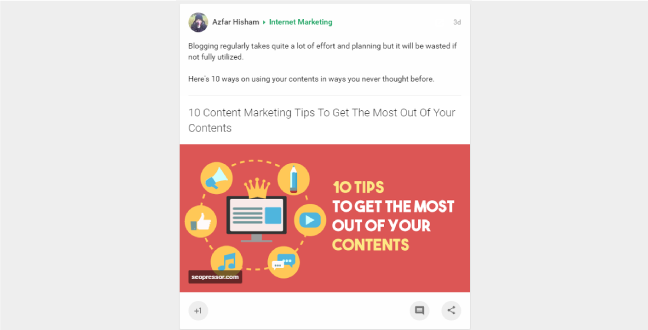
EVERYTHING. And this one is actually true across all media. TV shows and even books.
When it comes to online content, your title is your front cover. And believe me, people do judge a book by its cover. If we didn’t, we wouldn’t need a pithy phrase to remind us not to.
When it comes to a blog post, the title IS the cover. It’s the only thing you’ve got to make a big first impression. Writing a compelling title is a whole discipline in itself which you really want to get yourself familiar with.
For now, just know these elements are all compelling:
You don’t need them all, but four out of five has to do. If there’s one blog writing tip you need to take away from this, it’s this one.
For more references on blog titles, you may refer to a blog we’ve written about the 10 most powerful words for creating catchy headlines and our Data-Driven Headline Strategies Series.
Besides that, feel free to check out the TWO tools below to get blog title ideas for FREE!
Not sure what to blog about? Enter your keyword in the Keyword Intelligence to generate a list of title ideas for your content.
You will see hundreds of title ideas together with their metrics such as volume, trend, CPC, and types of intent.

You’ll also get to know the popularity of the title ideas just by looking at their search volume. Also, knowing the user’s intent beforehand will definitely guide you in creating better content that truly matches the user’s needs.
Let’s say you want to know the searcher’s intent when searching for ‘content marketing.’ Type them into the keyword tool.
It will show you the estimated keyword intent percentages based on the total number of related keywords.
The keyword has an informational intent from the example above, which means the searchers are in the awareness stages.
Since the searchers are looking for more information, you can create informational content such as ‘why do you need content marketing?’ and ‘top content marketing examples’.
Scroll down and you’ll be able to identify each keyword intent so that you can understand your target audience better.
That is a great help because it eliminates assumptions and guesswork to identify the searchers’ intent.
Head over to BiQ Cloud and grab a free tier account today!
Enter your targeted keyword and let the tool generate a list of catchy titles for you. It’s really simple to use!
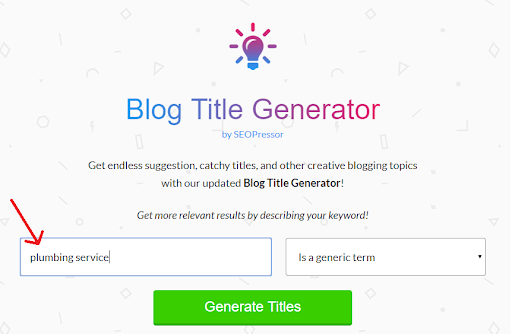
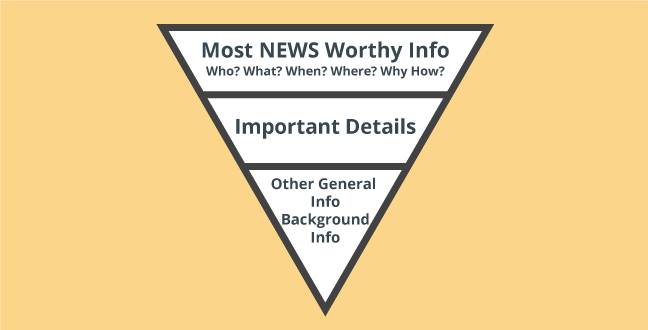
If your title is a promise, you have to deliver on your promise FAST. You need to reinforce the value people are going to get, so they stick around.
This is known as the inverted pyramid – you prioritize what matters most (we’re even doing it in this list – notice it’s not a countdown?), follow it up with other important information, then broaden out into the general context.
In this post, I recapped the past two weeks of great content and the promise for this article all in the first paragraph.
Then in the next one, I outlined how your assumptions about blog writing can be wrong – leading you to what’s right. The first two items on this list are the ones I want you to remember most.

Blocks of text have an overwhelming effect on people’s attention span. Namely, they stop people from paying any attention.
Keeping your paragraphs short allows people to scan them for content. If your paragraphs are huge, they lose the ability to scan, so they won’t absorb anything at all.
Short paragraphs also act like springboards – they keep people bouncing from one to the next, holding their attention for longer.

Keep sentences focused. There should only be one subject per sentence. Avoid run-on sentences.
A run-on sentence is a sentence that covers more than one topic. For example:
“If you write for too long, you’ll make your readers start to lose what it is you’re trying to talk about, and they’ll stop paying attention.”
Rewritten, that’s:
“If you write long sentences, readers will lose what you’re trying to talk about. They’ll stop paying attention.”
If you spot an ‘and’, and ‘or’, a ‘resulting in’, or your sentence runs more than two lines on the page, then you need to look at it again and break it down.
This helps keep things simple. Keeping it simple makes it easy to understand. If it’s easy to understand, people are rewarded for the time they spend reading.
It’s the best result you could hope for.
Ok so here’s the thing: the written word has a fraction of the information of speech. Speech conveys tone, mood, emotion, emphasis, and more. In text, we have to do most of that work ourselves using our imagination.
The good thing is, we have tools that can help us get around those limitations. Emojis are the most recent innovation, and we have a blog post on the power of emoji marketing which you can check out, but we also have some more old fashioned tools.
Bold helps things stand out. Italics help stress certain points. Underline reinforces a statement. By understanding how to use them properly, you can break up your text visually.
Reams of plain text look bland and monotonous. People scanning for information want certain things – the most important things – to pop. If they do, it makes getting at the value easier.
Using a conversational tone is a great way of avoiding many pitfalls. Using too much jargon is the quickest way to make people lose interest. Using an overly formal tone will equally come across as dry and boring.
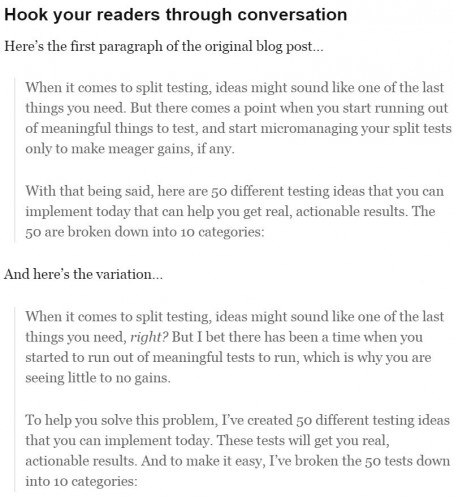
That said, it comes with a few things to bear in mind.
We did a whole bit on “don’t judge a book by its cover” because that’s something everyone has heard of. You understand what it means, what the logic behind it is, and the implications on the subject under discussion.
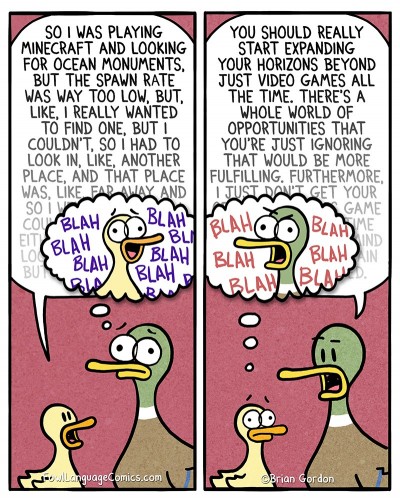
One danger of being too conversational is straying off topic – as such, you need to stay concise and focused. Every sentence you write should relate to the topic at hand. If it takes you a paragraph to loop back around and hit the point you’re trying to make – cut it.
Get to the point, just don’t talk like an astrophysicist or Shakespeare when you do.
Lifehacker has done a great job of explaining how to make complex ideas accessible.
Alternatively, watch Professor Brian Cox or Neil DeGrasse Tyson on YouTube. Listen to the kind of language they use. Notice the length of their sentences. Look at how they walk things through step by step. How complex are the words they use?
When it comes to helping people understand the value, taking cues from popularizers is a great place to start.
A more recent trend in text analysis has now advanced to identifying the emotion behind a text, better known as sentiment analysis. Yes, you may be writing conversationally, but have you thought about what sentiment you are actually portraying?
At BiQ, they give users the opportunity to redefine sentiment if they believe that it has been wrongfully categorized. Powered by its deep neural network, the sentiment analysis grade your writing into different categories.

With this, not only will you appear conversational, but you’d also have a peace of mind knowing that you aren’t annoying your readers. Go ahead and give BiQ a try today!

It’s a coincidence that I started referencing scientists right before talking about basing things in evidence. But’s a great coincidence.
What I want you to do is take a scientific approach to your content. Back up what you’re saying. Why do you think I have links peppered throughout this post? To back up what I’m saying to you right now.
Using references means if you don’t believe me, you can click through and see for yourself. Using credible references is different. That means when you click through you don’t find some badly written trash with no basis in fact – you find meaningful data.
Statistics get a bad reputation because they can be manipulated, but good statistical research is only ever meant to present one piece in the puzzle. How you frame and deliver it is what makes the difference. You have to show what it means. Not just objectively, but what it means to the reader.
Doing this builds trust. You aren’t talking out of your backside.
It shows value. You’ve done the hard work that readers can benefit from.

Use pictures to polish up your content. We’re visual animals, and we naturally prefer to look at visuals over text.
Adding visual stimuli to your blog posts will break up the monotony of seeing only wall of text.
In a similar way to using bold for emphasis, images can help you illustrate points with an example.
You can also use images to present your data – charts and diagrams, even step by step guides work better as infographics.
Visualising data helps the brain because it uses the most powerful part of the brain, the visual cortex, to process the information.
That said, there are a few things to avoid. First of all, stock photos. Unless you are really good at picking them, they add nothing. What’s more, they make posts feel impersonal.
Using stock photos is a cop-out, so people feel the whole post is impersonal. Judging the book by its cover again. Consider creating your own SEO-friendly images using tools.
You also want to take in account storytelling. Like a comic book, your visuals should be able to tell the story of your content without the need for the words. That way those who hate reading don’t have to.
Images can help you catch scanners and make them pay more attention.
What?
Exactly.
Don’t use big words.

The title includes a fancy way of saying ‘Love of using long words’. When you’re writing, there are several ego-driven instincts you need to be aware of.
The biggest of these is using big words to sound smart. All it does is confuse your audience while making you look pretentious.
Using big words excludes large sections of your audience. Remember, in a globalized world, a lot of your potential audience might be reading your content in a second language.
Using simple, straightforward language keeps things clear. That means easy. That means better.
A blog is meant to provide people with an introduction to a wider world. Each of these thirteen points could probably take up a blog post of its own and STILL not cover it in enough detail.
A helpful way for you to offset the summary nature of a blog is to link your most important points. This means if people are still hungry for more detail, they can click the link to find out more.
Linking also allows you to fill in knowledge gaps for your audiences. If you need to talk about an advanced aspect of SEO, you can link SEO so people who aren’t familiar with it can catch up before they continue to read.
As you develop your blog, you can begin to link more and more to your own content. This helps you keep people engaged with your website for longer. This in turn helps you rise in the search engine rankings. This means more potential customers and more opportunities to sell to existing readers. Great!

The human brain is a contrast engine. It recognizes difference. It’s as simple as black and white.
As such, people need to be able to see the difference between ‘content’ and ‘not content’.
If you have dense text with no white space, audiences will feel overwhelmed. If you give your content physical space to breathe, your audience will be able to as well.
White space allows people time and space to digest important content.
That means having space between your paragraphs, your images, your quotes and your videos so you never create blocks of content. They’re called blocks, and boy, do they block.
Think of your blog as a river, flowing from top to bottom. You want that flow to be easy and smooth. White space helps create the space for your ideas to flow. Without that space, your river turns into raging rapids, and you’ll lose your audience in the process.

If you have more than one thing to talk about, unless it’s a direct contrast between two things, then it’s a list.
People love lists. There’s a reason everybody uses them, from clickbait sites to genuine journalists. Lists are popular because they work.
If you have multiple examples to illustrate a larger point, listing them will provide an invaluable structure. It breaks things down, creates more white space, and makes it more like reading thirteen mini-articles instead of one gigantic tome.
If you’re still here, you can’t deny it works.
Lists feel definitive, even if we’re told they’re not. Once you’ve finished this article, you’ll feel like you’ve learned thirteen different things, instead of just “how to write the perfect blog post”, which comes across as one thing. The value is so much greater.
They also help set expectations – by now you know we only have one item left!
If you’re running a business online, you may be a lot of things, but a comedian probably isn’t one of them. As a reader, when you’re in a hurry and you want high-quality information, you’re not looking for jokes.
Similarly, trying to be witty or clever requires a greater amount of attention and energy from your readers than it’s fair for you to expect. They want clear information fast. Anything that gets in the way of that will be treated as an annoyance.
Keep it simple. If you launch into long-winded metaphors or complex concepts, you’ll lose at least a portion of your audience. If you write so it can be understood by the average 12-year-old, then you know that nothing you say is getting lost in the shuffle.
You can check your content readability using Content Intelligence by BiQ. After entering your target keyword and URL, you will see the readability grade at a glance.

Other than that, the tool will also analyze your content line-by-line and show their individual relevancy, sentiment, and readability grade.

Use these insights to improve your readability grade and help readers to understand your content better.
Try Content Intelligence for free here!
Something that is focused, concise, and informative.
Something that gives a clear promise of valuethen delivers on that promise.
Something that holds attention without being overwhelming.
Something that encourages clicks, likes, and shares.
In short, the perfect blog post.
So, you may be an expert in online business. You might even be an expert writer in other formats. But without these copywriting tips, you’re going to lose readers.
Monet would have been a terrible filmmaker – everything would be out of focus. You have to tailor your content to the medium you’re working in.
When it comes to applying these copywriting tips effectively, consider your audience and their experience. When you read a novel, how do you do it? On paper, cozied up on the sofa, with a spare afternoon.
Now, how do you browse the internet? On your phone in between subway stops. While walking. When looking for an answer to an immediate problem.
Using the internet is a very different experience. Writing on the internet needs to be tailored to that experience. Write about how you’d like to read, and you shouldn’t go far wrong.
Related Links:
Updated: 8 July 2025


Save thousands of dollars (it’s 100x cheaper)

Zero risk of Google penalty (it’s Google-approved)

Boost your rankings (proven by case studies)
Rank High With This Link Strategy
Precise, Simplified, Fast Internal Linking.
